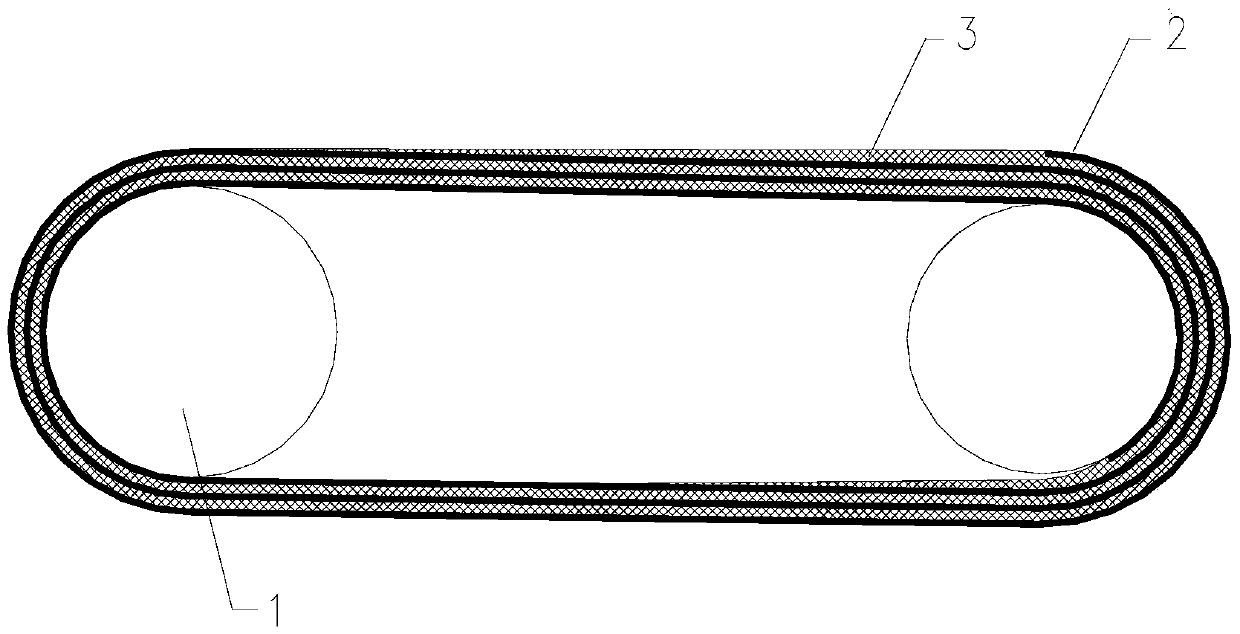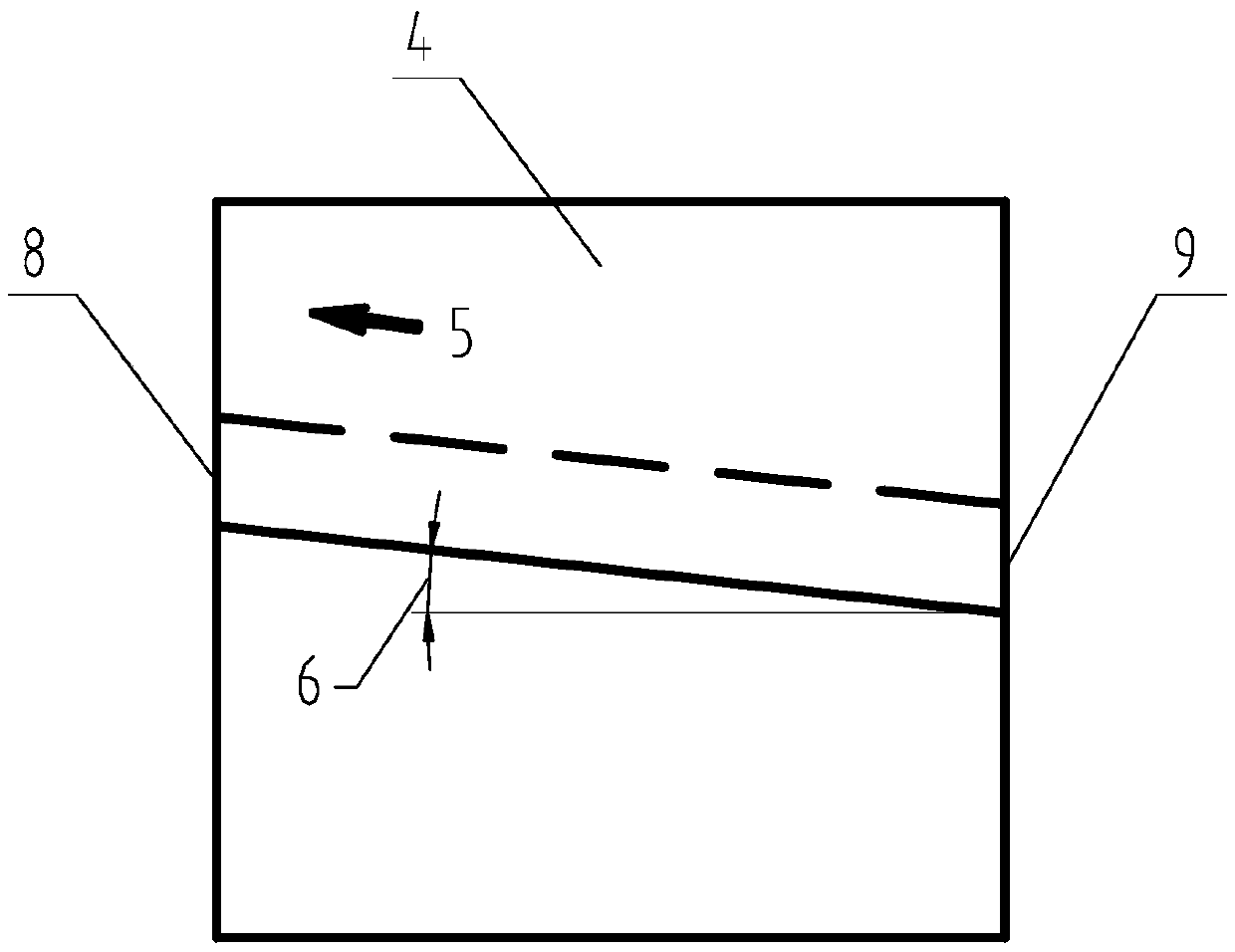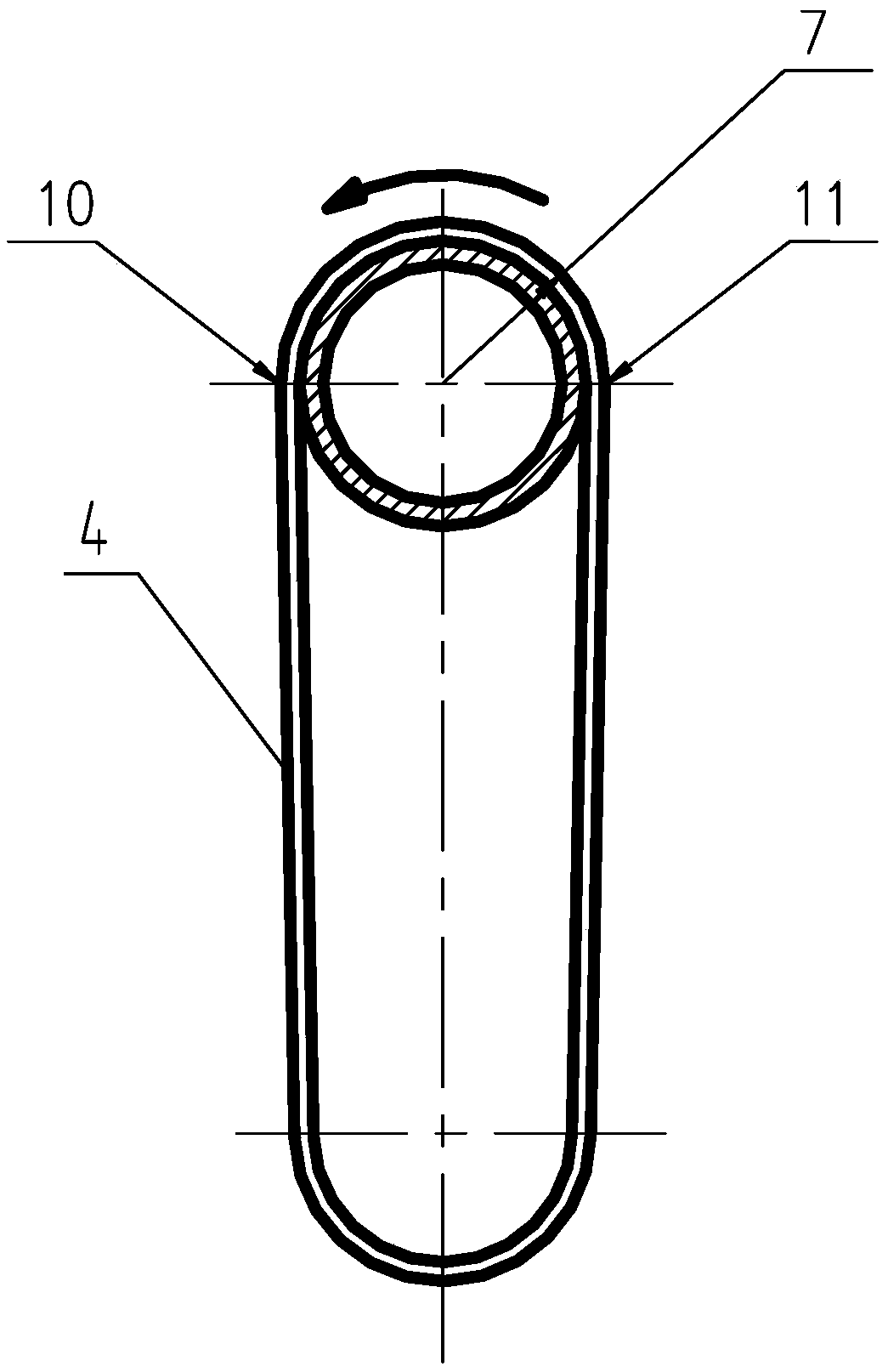comb conveyor belt
A conveyor belt and comb stripping technology, applied in conveyors, threshing equipment, belt fasteners, etc., can solve problems such as inability to adapt to long-term operation, shortening of conveyor belt service life, fatigue and heating of lap joints, etc. The effect of removing efficiency, reducing breakage and increasing flexibility
- Summary
- Abstract
- Description
- Claims
- Application Information
AI Technical Summary
Problems solved by technology
Method used
Image
Examples
Embodiment Construction
[0013] The preferred embodiment of the present invention is like this: with reference to Figure 1 ~ Figure 3 , the polyester fabric skeleton is wound more than one circle without interruption between two custom-made rollers 1 to make a multi-layer annular polyester fabric skeleton 2. During the winding process, natural rubber is evenly laid on the surface of the skeleton 3. Accelerators, vulcanizing agents, softeners, and fillers are added to the natural rubber 3 in a certain proportion, and finally the multi-layer annular polyester fabric skeleton 1 and the natural rubber 2 are integrally bonded by a vulcanization process to form a conveyor belt . The multi-layer annular polyester fabric skeleton 2 is used to increase the flexibility and strength of the conveyor belt, so that the conveyor belt can bear greater pulling force, which can improve the life of the conveyor belt several times. On the surface of the polyester (polyester) fabric skeleton 2 The natural rubber 3 laid ...
PUM
 Login to View More
Login to View More Abstract
Description
Claims
Application Information
 Login to View More
Login to View More - R&D Engineer
- R&D Manager
- IP Professional
- Industry Leading Data Capabilities
- Powerful AI technology
- Patent DNA Extraction
Browse by: Latest US Patents, China's latest patents, Technical Efficacy Thesaurus, Application Domain, Technology Topic, Popular Technical Reports.
© 2024 PatSnap. All rights reserved.Legal|Privacy policy|Modern Slavery Act Transparency Statement|Sitemap|About US| Contact US: help@patsnap.com










